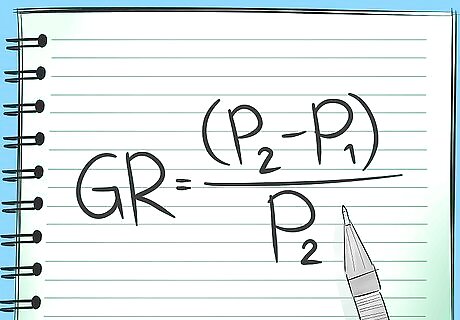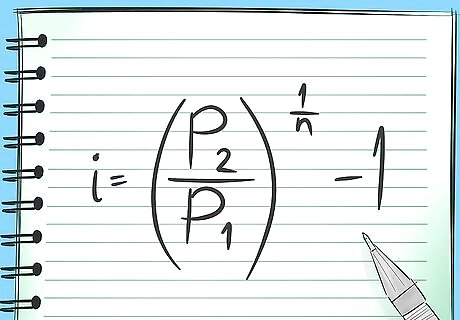
views

Record the asset's price at several points in time. To calculate a growth rate, you will need at least 2 data points. The farther apart these data points are, the more accurate the growth rate is likely to be. For example, it is better to use price points 10 years apart than points 1 year apart. Having more than 2 price points will allow you to calculate the asset's constant change in price over small periods of time. This is useful is you plan to adjust your figures for market movements.

Familiarize yourself with the formula used for calculating a growth rate. An asset's growth rate between 2 price points can be calculated using the following formula: GR = (P2 - P1) / P1. In this formula, "GR" represents the growth rate, "P1" represents the early price point, and "P2" represents the later price point.

Calculate the asset's growth rate using the formula above. To arrive at the growth rate between your 2 points in time, plug your numbers into the growth formula. For example, consider a stock that was priced at $43 per share 10 years ago, and is currently priced at $60. Using the formula above, the stock's growth rate is (60 - 43) / 43, or 0.39. This means that the stock increased in value by 39 percent over the 10-year period analyzed.Calculate an Asset Growth Rate Step 3Bullet1.jpg Note that this growth rate is not an annual return. The asset above can be expected to grow by 39 percent every decade, not every year.

Annualize the growth rate for easy analysis. Generally, you will want to know how big of a return you can expect on an asset on an annual basis. Converting a long-term growth rate to an annual growth rate uses a slightly more complicated formula than above. The formula is: i = (P2 / P1) ^ (1 / n) - 1. In this formula, "i" represents the annual growth rate, and "n" represents the number of years between the 2 price points. In the example above, the annual growth rate is: (60 / 43) ^ (1 / 10) - 1, or 0.0338. This means that this stock grew by an average of 3.38 percent each year over the 10-year period.Calculate an Asset Growth Rate Step 4Bullet1.jpg Using an annualized growth rate will better allow you to compare assets against each other. It will also allow you to determine whether an asset meets your required rate of return for a given level of risk.




















Comments
0 comment